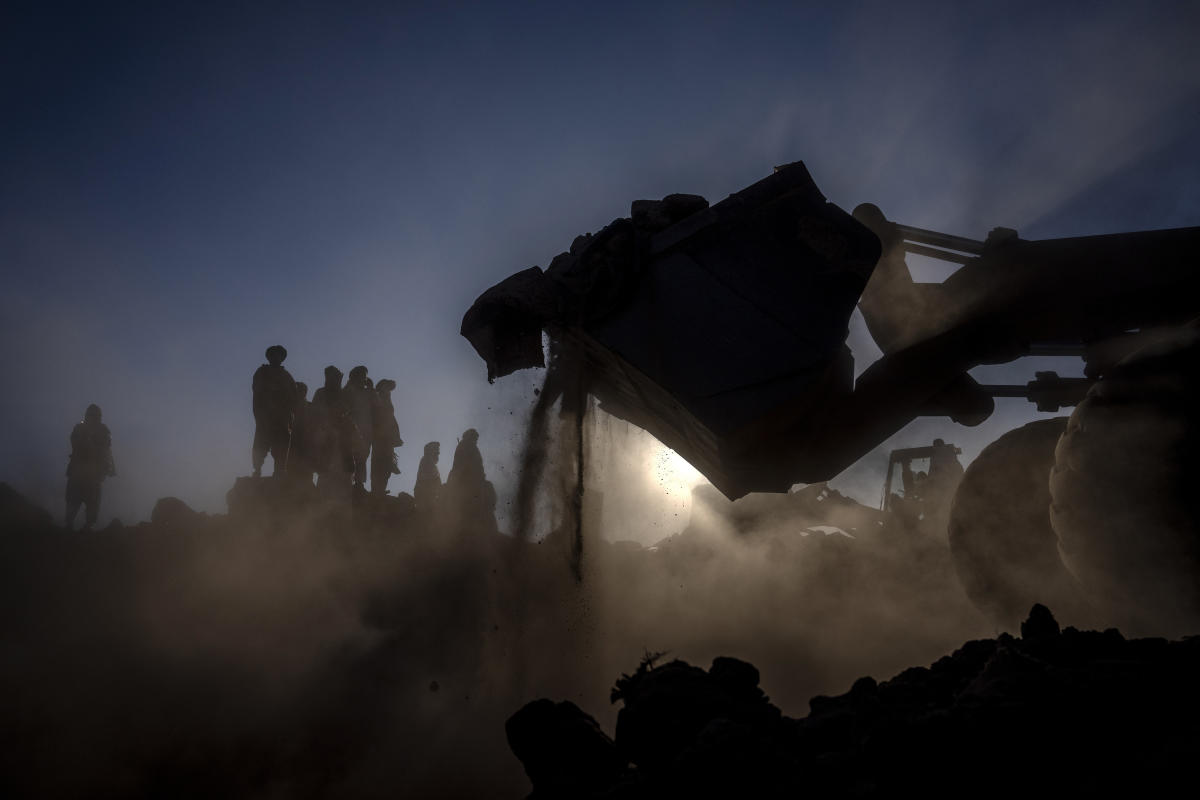ZINDA JAN, Afghanistan (AP) — Nurullah crossed the border into Iran to earn money for his family, like so many men from his village in western Afghanistan.
On Sunday, he stood on the side of the road crying.
The 55-year-old was heading home to bury his wife, three children and a grandchild killed a day before, when an earthquake left at least 2,000 people dead in Afghanistan’s Herat province.
On Wednesday, another quake of the same magnitude struck nearby. It is not yet clear what further damage it caused to the already devastated region.
The hearses arrived, following Nurullah’s directions to find the remote village, and mourners took the dead to the cemetery.
Nurullah’s sister Maahzaad, 53, kept repeating her daughter’s name.
She had a son, who she’d already lost to war and misfortune. Now she had lost her only remaining child, a young woman married three months earlier.
Nurullah — many Afghans use only one name — got out of the car and people came over to welcome and him with hugs.
In the nearby village of Naib Rafi, people picked up debris after coming from elsewhere to help survivors and pull bodies from the rubble.
The entire village of around 300 homes was destroyed, leaving nothing but mounds of dirt. Almost all of the 2,500 residents were killed or hurt, except men who were working outside when the earthquake hit.
One man lost 12 members of his family. While 11 bodies had been pulled from the rubble, he could not find the body of his 4-year-old daughter.
After searching for it for two days, he gave up and called for help.
Sometimes dead animals could be seen among the ruins. In the twilight, a man with a blanket wrapped around him walked around crying and talking to himself. Mullah Abdul Basir said he was working outside the village when the quake struck, killing five members of his family.
“When I left home,” he said, “everyone was fine. My children were playing in the yard. When I returned, There was nothing.”
Survivors were mostly those who were working outside when the quake struck: The dead were mostly children, women and old people who could not leave the house.
People were searching the debris when a cleric asked them to start digging graves, and it took a day to dig enough with a front-end loader, a bulldozer and many people.
People stood on the hilltops outside the next village, burying hundreds of bodies.
A man who had lost his wife and child embraced his wife’s grave, crying silently. A boy sat in the crowd next to his brother’s grave, mourning and reminiscing.
A man handed his own child’s body to his father and said: “Here, come bury your grandson.”
Another man who had lost his father cried and said that he’d lost not only his father, but his teacher and his guide. A little girl begged for people to show her her younger brother’s face before burying him.
As it got dark outside the village of Naib Rafi, bodies were spread out in the plain, as people were putting them in the graves. Hundreds of bodies were laid in the trenches.
The only sound was the noise of picks, shovels, and digging machines.
____
Ebrahim Noroozi is an AP photographer based in Kabul who is traveling to quake-affected areas in the west.


